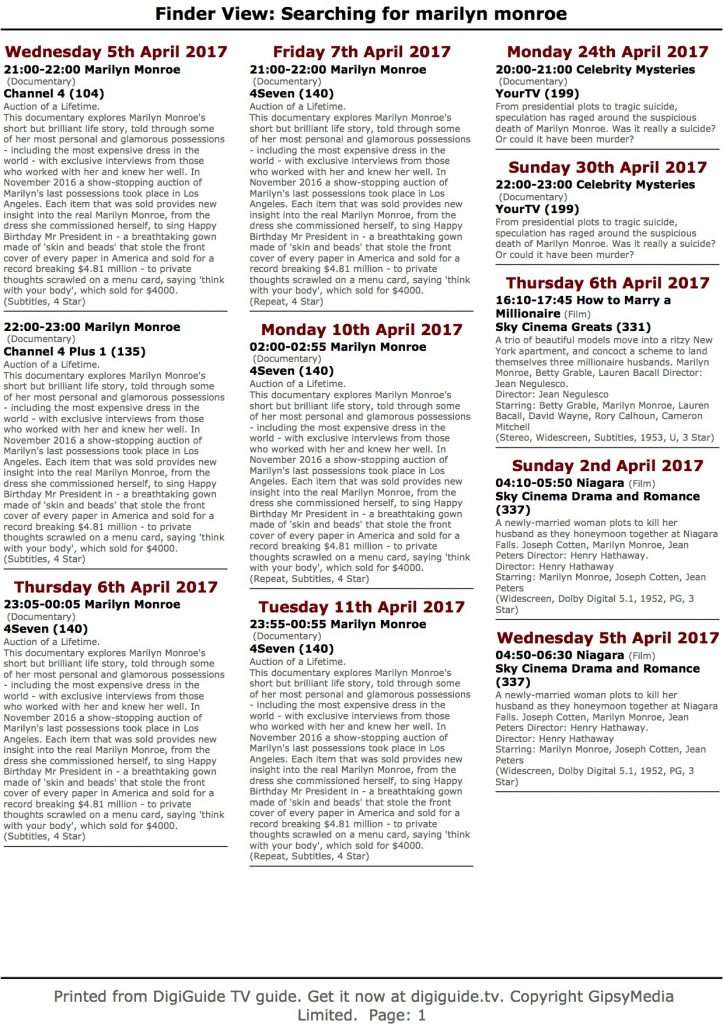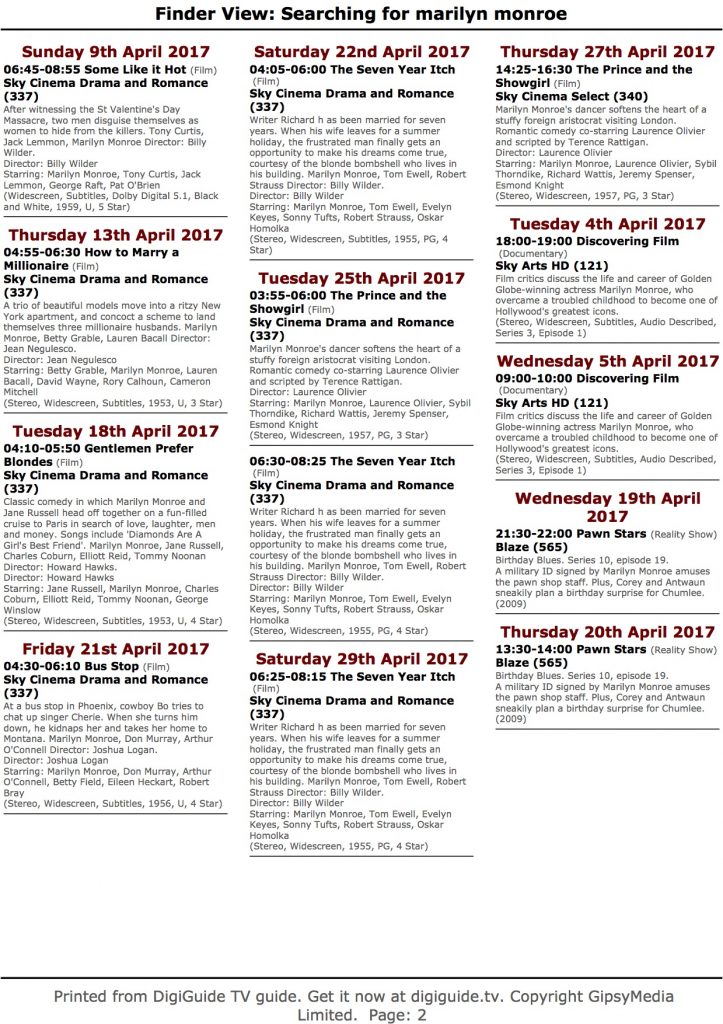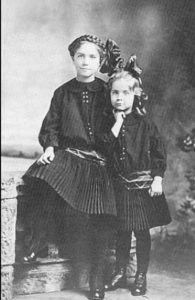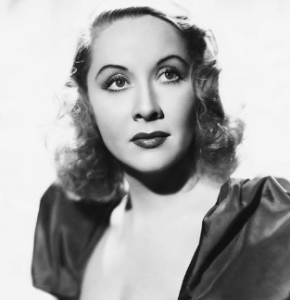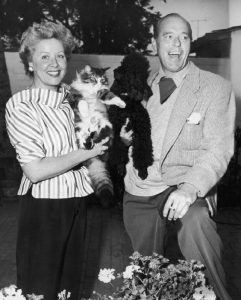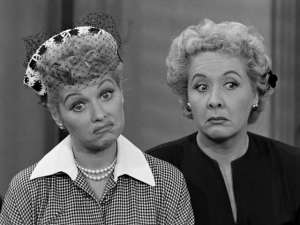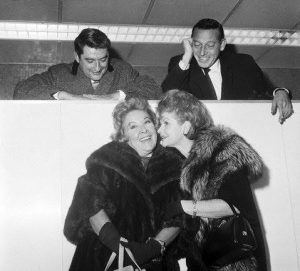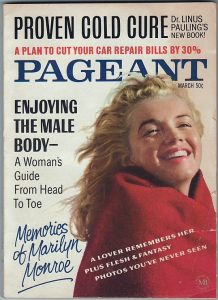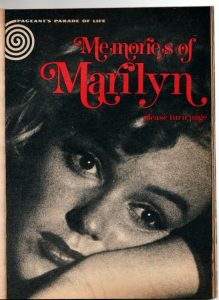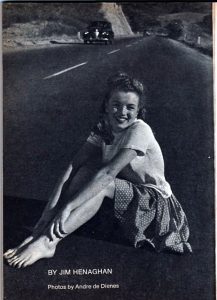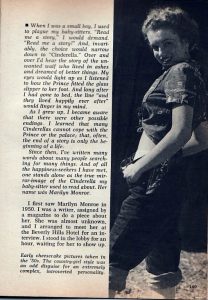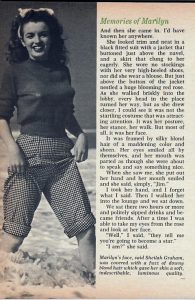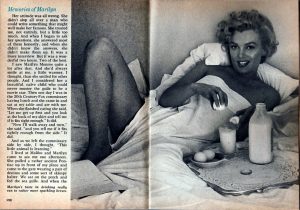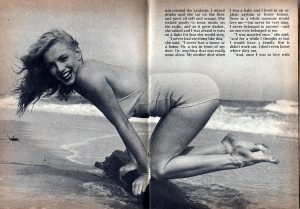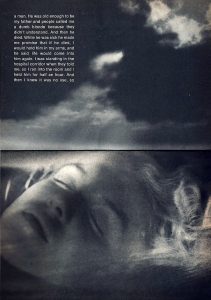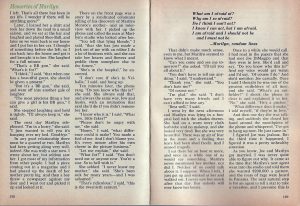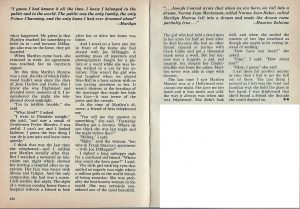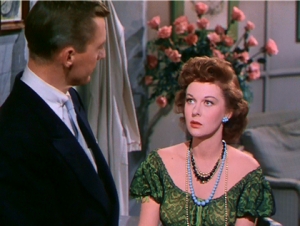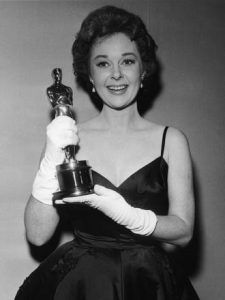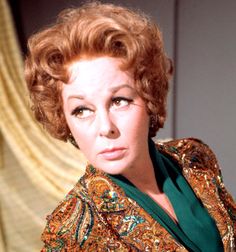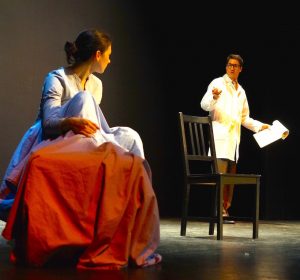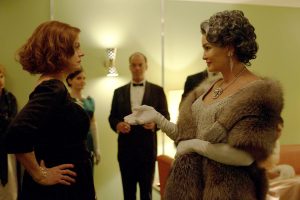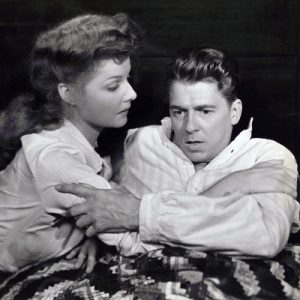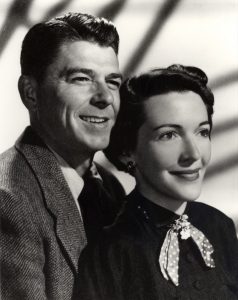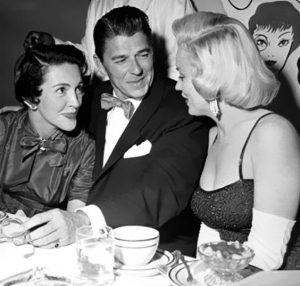It’s Friday once again, and it’s time to see how our girl popped up in the headlines this week!
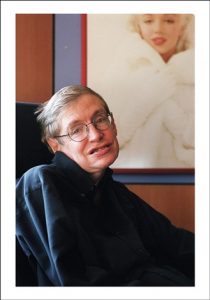 Who would Stephen Hawking choose to life with him on a desert island for the rest of his life? In a recent interview for Good Morning Britain! Hawking named Albert Einstein, Galileo, and….Marilyn Monroe. Famous physicist Hawking is known to be a big Marilyn fan; he decorates his office with her posters and has a Marilyn mug on his desk. Without a doubt Marilyn would be touched to be included among such an illustrious group, particularly Einstein, a man she greatly admired.
Who would Stephen Hawking choose to life with him on a desert island for the rest of his life? In a recent interview for Good Morning Britain! Hawking named Albert Einstein, Galileo, and….Marilyn Monroe. Famous physicist Hawking is known to be a big Marilyn fan; he decorates his office with her posters and has a Marilyn mug on his desk. Without a doubt Marilyn would be touched to be included among such an illustrious group, particularly Einstein, a man she greatly admired.
Remember that Marilyn-themed house we reported on last week? Well it turns out the place is drawing a lot of interest. The owner is likely to get her asking price for the place, given the fact that her realtor reports there have been calls from all over to view it. The home has gone viral on the internet, drawing the curious to see just how much Marilyn one can fit in less than 1200 square feet (A LOT).
No word on how the auction this past week went for the fan footage of Marilyn on the set of Some Like it Hot – in colour no less – that recently surfaced. The estimate, according to the report, was around $4000, but give what Marilyn items go for these days, it would be no surprise if it went higher.
Model Karlie Kloss, the face of Swarovski, gave tribute to Marilyn in a performance celebrating the company’s history. Wearing a pink one-shouldered gown, Kloss gave a Diamonds are a Girl’s Best Friend-esque performance – perhaps arguing in favour of Swarovski crystals over real diamonds? Lorelei Lee would most certainly beg to differ.
That’s it for this week – enjoy the weekend!
Hi there Marilyn fans! It’s time to round up all the headlines our girl has been making lately! As usual she’s in the news…
Think your home has a Marilyn theme? It may not be on the same level as this Dublin house, which made headlines for its Marilyn-intensive and very colourful interior when it went up for sale recently. The home features Marilyn – and a lot of bright decor – in nearly every room, leading headlines to call it “garish”. What do you think Marilyn fans? A fabulous Marilyn shrine or a little too much?
In other real estate news, a condo in the building where Marilyn once lived has hit the market for a whopping $5 million. It’s not Marilyn’s apartment, but the building certainly comes with a lot of history.
The Marilyn Monroe Spa brand is expanding out of the United States and into…India? Reports say the company has struck a deal to build 250 of their themed spa franchises in cities like Mumbai. Although India isn’t the first international location most people will think of when they think of Marilyn’s fandom, multiple Bollywood stars from the nation have been named in the “channeling Marilyn” department, or compared to her. The company clearly thinks there is a market there, and plans to expand to further international locations in the future.
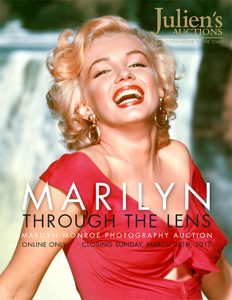 The battle over the rights to Marilyn’s name and image continues in court. This week a U.S. District Court heard further arguments as to whether or not the name Marilyn Monroe is in the public domain or can be held as a trademark by the estate. The ultimate question: is “Marilyn Monroe” too generic to be owned by the estate? The ongoing case will eventually determine whether the estate can continue to have sole ownership of her name, contrary to what the company involved in the suit claims. Stay tuned…
The battle over the rights to Marilyn’s name and image continues in court. This week a U.S. District Court heard further arguments as to whether or not the name Marilyn Monroe is in the public domain or can be held as a trademark by the estate. The ultimate question: is “Marilyn Monroe” too generic to be owned by the estate? The ongoing case will eventually determine whether the estate can continue to have sole ownership of her name, contrary to what the company involved in the suit claims. Stay tuned…
On the heels of the huge November 2016 auction of Marilyn items come two further auctions from Julien’s. On now and online only is the Marilyn Through the Lens auction, featuring images of Marilyn taken by multiple photographers throughout her career. Some of Marilyn’s famous jewelry will be featured in an upcoming Treasures From the Hollywood Vault auction. Included are the earrings worn with the gold lame dress in Gentlemen Prefer Blondes, among other items.
Shockingly, we don’t have any new installments to the “Who Channelled Marilyn?” list this week, but Cosmopolitan does have an interview with former Universal Studios Marilyn impersonator Danica Kennedy, who talks about what it’s like to play Marilyn and how it impacted her career.
That’s the news for this week – Happy St. Patrick’s Day!
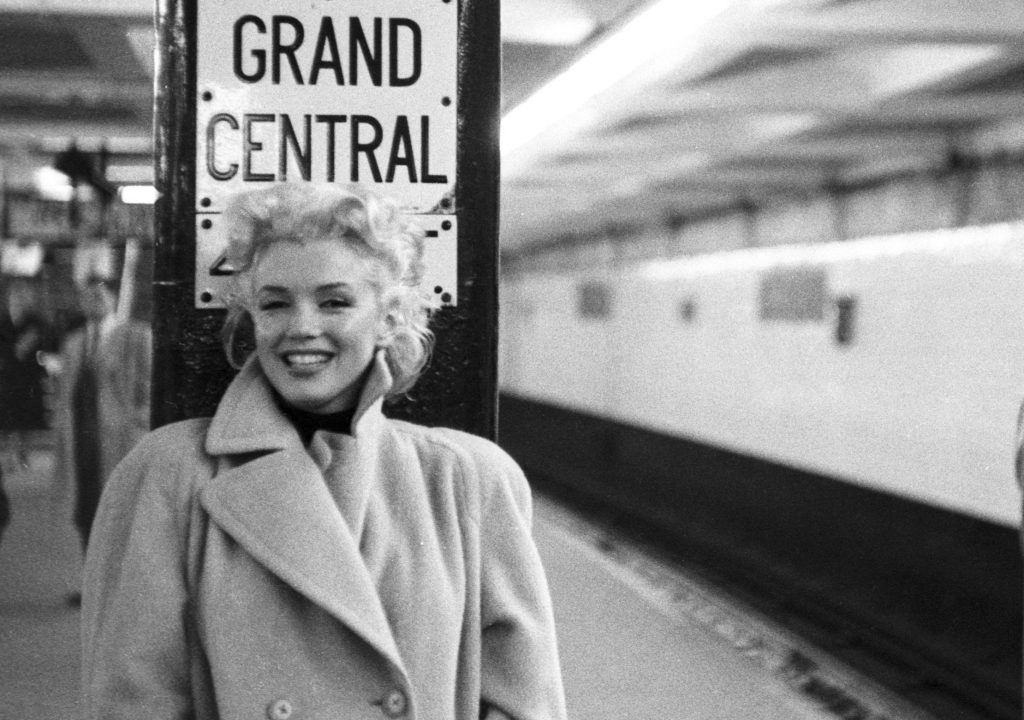
When Marilyn Monroe pulled a disappearing act and resurfaced in New York ready to take control of her career, Hollywood was shocked and everything changed for the world’s favourite blonde. Author Elizabeth Winder looks at her year of rebirth in the newly released book Marilyn in Manhattan: Her Year of Joy, available now in hardcover and ebook formats. She talks about her book and her inspiration in an interview for Immortal Marilyn.
 What inspired you to write a book about Marilyn Monroe? Do you consider yourself a fan, and were you a fan prior to writing it?
What inspired you to write a book about Marilyn Monroe? Do you consider yourself a fan, and were you a fan prior to writing it?
I actually came late to Marilyn Monroe. The most popular images of Marilyn are highly stylized– the caked on makeup and gummy red lipstick, the glued on lashes, skintight skirt and baby-doll coo. Somehow I picked up a copy of Norman Mailer’s fictional biography of Marilyn– which is sexist and horrifying but just so beautifully written– I read it in one night and started googling Marilyn obsessively, and found all those amazing photos by Milton Greene. He photographed her with very little makeup, wearing baggy slips and sweaters or coarse wave skirts and heavy boots. Those photos really made me fall in love with Marilyn.
You went from writing about Sylvia Plath to Marilyn. On the surface those seem like two vastly different people. Do you feel there were similarities between them? If so, did that surprise you?
It’s interesting to compare Sylvia Plath and Marilyn Monroe– I quite like the way Carl Rollyson compares them in his Plath bio American Isis. They both had such sensitivity and ambition. They both could command a room– that much is clear from anyone who remembers them. But Marilyn sparked something protective and nurturing in those who knew here, whereas Sylvia presented as much more self possessed. I wasn’t surprised by the similarities– I’m drawn to thin-skinned, creative women. Sometimes I imagine Sylvia and Marilyn as roommates. Marilyn would have driven Sylvia crazy– eating ice cream in bed, crumbs and cigarette butts strewn everywhere, probably borrowing Sylvia’s lipstick because she couldn’t find her own. Sylvia labeled her nail polish bottles so no one else would use them. But Sylvia was fascinated by Marilyn, particularly her relationship with Arthur Miller. I think Sylvia was ahead of her time– she looked beyond Marilyn’s blonde bombshell facade and saw something nuanced and special.
Why did you choose Marilyn’s first year in New York as the focus for your book?
After clicking through pages of photos Milton Greene took of Marilyn I began to read more about their relationship. I was touched by the potential he saw in Marilyn, the way he risked everything for her. I saw a real story there, a story that unfolded over the course of a year. I was shocked that no one had devoted a book to it yet– it seemed almost too good to be true.
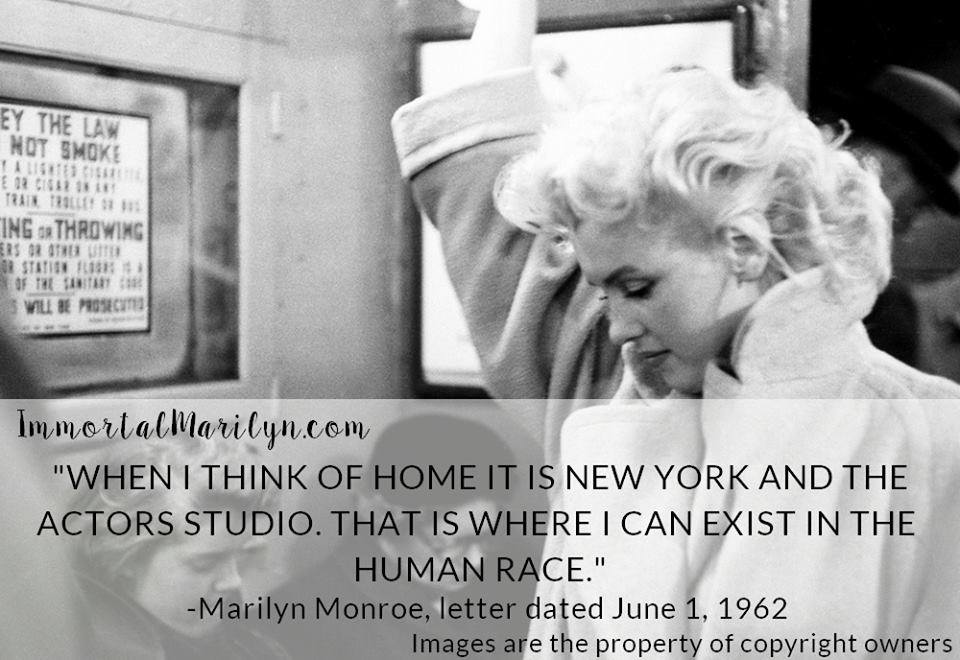
The move to New York was a major turning point in Marilyn’s life and career. Do you think, in the end, that it was a good move for her, in spite of the fact that by the end of her life she found herself back in LA making another fluff comedy?
Breaking from Fox and teaming up with Milton Greene was the best move Marilyn ever made. In New York she was loved and appreciated. Carson McCullers, Truman Capote and Tennessee Williams befriended her. William Motter Inge wrote a play for her. I think we underestimate how much this meant to Marilyn– she adored writers, she worshipped them. In LA she was ridiculed, abused and incredibly lonely. And her friendship with Milton was so life-enhancing, so positive, so full of mutual support and creativity. If Arthur Miller hadn’t broken them up, I think Marilyn would have lived happily for decades, making movies and possibly even directing.
Marilyn is one of those people about whom there is an incredible amount of misinformation. What one thing do you most wish the average person knew about her?
I wish they knew that Marilyn was funny– I don’t mean the witty media quips but that warm-hearted kind of funny that makes you smile and want to hug someone. I wish they knew that Marilyn actually read Ulysses and didn’t just pose with it. I wish they knew that as a starving model she spent her money on books instead of food. I could go on and on– that’s why I wrote Marilyn in Manhattan– I totally fell in love with her!
Want to win this book? IM is giving away five copies courtesy of Flatiron Publishing! Leave us a comment telling us why you’d love to have a copy to be entered in a drawing to win!
CONTEST CLOSED. Congrats to our winners!

Life and Career
Euphemia Mae (Ragan) Jones and Bob Jones welcomed their second baby girl, Vivian Roberta Jones, on July 26th, 1909, in Cherryvale, Kansas. The Jones family would have a total of six children. Vivian’s mother Euphemia “Famie” was heavily religious, and growing up, she always hoped that Vivian, an outgoing and independent child, would pursue a career in teaching, rather than the stage, where Vivian knew in her heart she was destined to be from a young age.
Searching for better financial opportunities, the family soon moved to the town of Independence, Kansas, where Bob and brother Ralph opened the Jones Brothers Grocery Store. There, Vivian’s childhood consisted of staying out late with friends, getting out of the house as much as possible, and being adventurous. Despite heated arguments between Vivian’s parents, especially regarding Bob’s extra relationships with a few other women, he and Famie remained together and in 1928, the Jones family packed their bags once again and moved to Albuquerque, New Mexico for a fresh start.
However, Vivian did not go with them. By this time, she was in her late teens, and longed to be freed from the strict and limiting confines of her home. She needed an environment to express her unique talents and passions; she was not being given the encouragement she needed at home. A couple years before her family made the move to New Mexico, Vivian had made the decision to move to Tulsa, Oklahoma, to pursue her passion for singing and stage acting. She spent her Tulsa days in a small hotel room while performing at the Crystal City Amusement Park. It wasn’t long before she fell for a man named Joe Danneck, a booking manager for the musical Broadway, which was making its way across the Midwest at the time. With Joe’s help, Vivian eventually landed a chorus role in the show and began touring with the company. The couple’s relationship quickly became serious, and they were married on October 6, 1928.
Vivian soon reunited with her family in Albuquerque, moving into a small apartment there with her new husband. However, she and Joe were leading separate lives, and didn’t see each other often. By 1930, they were divorced. From there, Vivian became an overnight sensation in Albuquerque with her role in the vaudeville show Cushman’s Revue. This helped secure her a spot in the new Albuquerque Little Theater, where she landed lead roles in the seasons’ productions and shined among the cast, receiving great audience and critical appreciation. She was so loved by the community that the proceeds from a 1932 performance of The Trial of Mary Dugan were transferred to a special bank account for Vivian to be sent to New York.
Forever feeling that she owed Albuquerque for her opportunity, Vivian was determined to do well and become a successful stage actress. For years she worked to build her acting and singing experience, appearing in both lead and minor roles in several theatrical productions, and even made appearances on Broadway. At one point she was the understudy to Ethel Merman, and the rival of Gertrude Lawrence. By 1933, Vivian married again, this time to musician George Koch. They had little in common, and marriage didn’t stop Vivian from seeking other opportunities from other men. She soon suffered a blow to her reputation in the press when she was caught seeing stage actor Phil Ober by his wife who had hired a private investigator.
“Men and marriage didn’t seem important to [Vivian], only as a means to an end. Her whole focus was on becoming successful.” – Vivian’s roommate Anne Farleigh
In 1941, not long after Vivian’s divorce from George, she was married to Philip Ober. It was around this time that Vivian’s mental condition began to take form. Vivian had previously suffered bouts of depression, with symptoms such as fatigue or other physical ailments that would manifest as a result of stress. However, by now her condition was becoming more severe. She would sleep for twelve hours a day and suffered major depressive episodes, paranoia, violent nausea, swollen tongue, and panic attacks. By this point, Vivian was in the middle of a successful stage run of Voice of the Turtle. She immersed herself in books on psychology and various analysts that were recommended to her.
By the late 1940’s, shortly after the breakdown which caused her to seek help, Vivian reluctantly reprised her role in Voice of the Turtle to perform in La Jolla, California. This would change the course of her life and career forever. Three important people were in the audience that night: director Marc Daniels, writer/producer Jess Oppenheimer, and actor/bandleader Desi Arnaz. Arnaz and his wife Lucille Ball were at the beginning of creating what would become the most successful program in television history: I Love Lucy. The group was impressed with Vivian, and she was hired on the spot for the role of Ethel Mertz.
After her big break as Mrs. Mertz, Vivian filmed two more Lucy programs: The Lucy-Desi Comedy Hour and The Lucy Show. She would later make several cameo appearances in later shows. By 1959, she was divorced from Philip Ober, and by 1961, she was married to successful publisher John Dodds. While Vivian had cemented her fame with the success of the Lucy shows she filmed, she longed to return to her home in Connecticut to lead a quieter life and take care of her husband and become a proper housewife.
“My ambition was never to be a big star. I’ve seen very few happy stars, and I was determined that that wasn’t going to happen to me.”
Once her memorable stint with Lucy was over, Vivian turned her focus back to stage productions and using her experience with depression to help those going through the same struggles. However, her next battle was just beginning. In 1973, Vivian was diagnosed with breast cancer, and underwent a six hour surgery in order to eliminate the disease. Under the impression she was cancer-free, Vivian reunited with Lucille Ball for their last television show appearance together in 1977 for Lucy Calls The President. Not long after, Vivian received more devastating news: she now had bone cancer. By now, she and husband John Dodds were living in Belvedere, California, where she would spend her last days. Vivian was in incredible pain, and finally came to accept that she wouldn’t have much longer to live. Her husband and siblings always by her side, she was finally ready to go. “We all sat around praying, ‘Let her go. Please let her have her wish.’ A lot of people might think that was weird but it was her wish and we wanted her to have her wish. When she did, it was a mixture of jubilation and great sadness.” – Lou Ann, Vivian’s youngest sister
Vivian succumbed to her cancer on August 17, 1979. She was seventy years old.
Personal Connections
Marilyn suffered the loss of two unborn children in 1957 and 1958. Vivian also knew the pain of a miscarriage.
Both women were distant from their mothers, who were heavily religious and did not approve of their career choices. Marilyn’s mother was schizophrenic, which left Marilyn traumatized and abandoned as a child. Vivian had almost no good memories with her mother. When Vivian’s fame escalated, Mae would send her letters criticizing her for her for participating in the sinful industry that was show business. Mae, like Marilyn’s mother, offered no support for her daughter’s passion, and, if anything, advised against it. However, it was only a couple years before Mae died that she finally came to appreciate the success of her daughter.
Both women suffered major bouts of depression. While they both sought professional help, it was Vivian who gained support and a better mindset through psychotherapy. Marilyn is an example of how psychoanalysts fail by overstepping their patients’ boundaries and enable them rather than help them. Vivian, however, received a great deal of help through her journey. She not only developed a healthier mind, but she used this newfound knowledge and confidence to help others in need. Vivian was one of the first celebrities to speak openly about mental illness and depression at a time when these types of conditions weren’t focused on or deemed as very severe. Vivian visited countless hospitals to speak one on one with patients suffering from depression, and changed a lot of lives for the better just from her heart to heart talks with them.
“The most important thing she felt she ever did in her life was bust open depression. She healed more people in this country than anybody has any idea of.” –Paige Peterson, close friend
Both women despised being stereotyped in their work. Marilyn worked relentlessly to rid the “dumb blonde” image her studio had always given her, and Vivian couldn’t stand to be called “Ethel” in public. Vivian, in real life, was the polar opposite of Ethel Mertz, and hated being stereotyped with the frumpy housewife she portrayed on-screen, let alone that the public could actually picture her with the elderly William Frawley.
Vivian Vance and Marilyn Monroe may have led very different careers, but they share quite a bit in common personally. Vivian may always be remembered for her role as the loyal Ethel Mertz and Marilyn as the blonde bombshell, but both women should and will continue to be celebrated for the unforgettable mark they made as actresses in television and film. They will always be treasured for their talent, compassion, and timeless brilliance.
-Ky Monroe for Immortal Marilyn
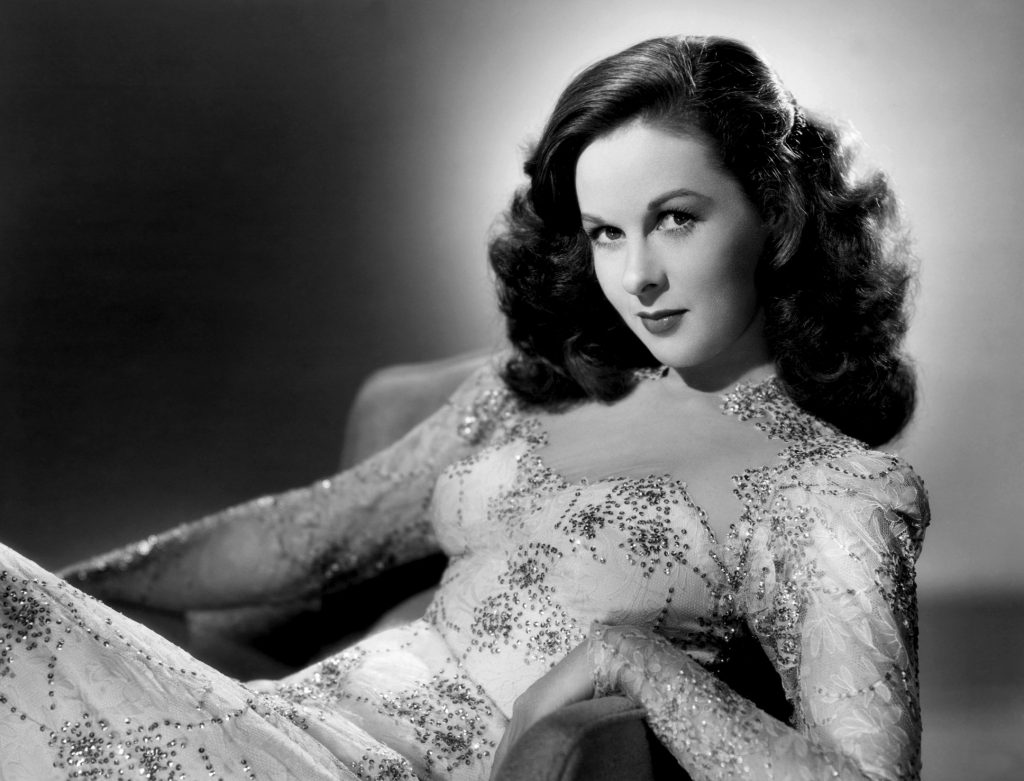
Life and Career
Edythe Marrenner was born on June 30, 1917 in Brooklyn, NY. Her childhood was spent in a working class family which some refer to as poverty-stricken, although others suggest the family was comfortable. Susan herself said they were poor:
“I learned at a very early age that life is a battle. My family was poor, my neighborhood was poor. The only way that I could get away from the awfulness of life, at that time, was at the movies. There I decided that my big aim was to make money. And it was there that I became a very determined woman.”
Either way, she was not born into privilege, and difficulty did mar her childhood, as a car accident at 7 years old left her in a body cast for several months and gave her a lifelong limp. She attended public schools and graduated in 1935; the daughter of an Irish actress, she had already begun to show an aptitude for the stage in her teen years. It was, as with so many young women, the modeling world that came calling first. After gaining some attention as a model on the New York scene, she joined the many beauties seeking fame in Hollywood.
Susan came west in 1937 to screen test for what may well have been the most sought-after acting role in history, that of Scarlett O’Hara in Gone With the Wind. She didn’t get it of course, but did get a new name, Susan Hayward, and earned some bit parts before finally being cast in Beau Geste with Gary Cooper in 1939. The young beauty continued to get roles, but it wasn’t until the mid-1940s when her career took off. Meanwhile, in 1944, she began a tumultuous ten-year marriage with actor Jess Barker, and in February of 1945 gave birth to premature twin sons.
In 1947, as young Norma Jeane was at the beginning of her career, Susan Hayward received her first of five Oscar nominations for Smash Up, the Story of a Woman. As her marriage struggled, Hayward’s career did not. Throughout the 1950s she continued to earn acclaim for roles in films such as With a Song In My Heart (1952) and The President’s Lady (1953). In 1954 her marriage to Jess Barker ended, and Susan reportedly attempted suicide.
Her recovery brought her back to a career still on an upward trajectory. She continued to receive acclaim and Academy Award nominations for her screen work, finally winning the long-awaited statue in 1959 for her role in the 1958 film I Want To Live!
In 1957, Haywrd remarried, this time to Georgia rancher Floyd Eaton Chalkey. Although she lived a happy life with him in Georgia, she continued to make films. It was his death in 1966 that spelled the beginning of the end of her career. Her deep mourning took her away from stardom and to a quiet life in Florida, although she later returned to California. She starred with Sharon Tate in Valley of the Dolls, her last major appearance on film. Her final role was in the TV movie Say Goodbye, Maggie Cole. The title was someone prophetic. Susan said goodbye to acting and was diagnosed with brain cancer the following year. In 1975, she passed away, and was returned to the place of her happy years of marriage in Georgia for burial.
Marilyn Connections
Like Marilyn, Susan started out as a model, and worked her way through bit parts before getting starring roles. The two shared many co-stars as well as directors. Susan appeared with Joe E. Brown in $1000 a Touchdown – he later appeared in Marilyn’s hit Some Like it Hot. She appeared in I’d Climb The Highest Mountain and With a Song In My Heart with Marilyn’s River of No Return co-star Rory Calhoun, with her other RONR co-star Robert Mitchum in The Lusty Men, and in I Can Get It For You Wholesale with All About Eve‘s George Sanders. With a Song in My Heart also starred two other Marilyn co-stars, David Wayne (As Young as You Feel) and Thelma Ritter (All About Eve, As Young As You Feel, The Misfits).
In White Witch Doctor she again starred with Robert Mitchum, and was directed by Marilyn’s O. Henry’s Full House and Niagara director, Henry Hathaway. Susan starred with Marilyn’s Don’t Bother To Knock co-stars Ann Bancroft in Demetrius and the Gladiators, and Richard Widmark in Garden of Evil. In Soldier of Fortune Susan starred opposite Marilyn’s The Misfits co-star Clark Gable. In 1961 she appeared in Ada with Dean Martin, Marilyn’s co-star in the ill-fated Something’s Got to Give and with All About Eve star Bette Davis in Where Love Has Gone.
When Marilyn selected her wardrobe for Bus Stop she chose a green blouse that was previously worn by Susan Hayward in With a Song In My Heart. Susan’s film The Snows of Kilamanjaro also starred Hildegard Knef, who sported two dresses also seen on Marilyn in publicity photos.
Both women looked to the movies as a way to make their own way in the world, although Susan seemed more interested in financial stability and Marilyn more in being adored. Both faced depression and suicide attempts as well as failed marriages, although Susan did eventually find happiness in marriage, although it ended again in sadness. A look at Susan’s life leads one to wonder, had Marilyn been given some of the same roles, how her career might have been different.
Hi there Marilyn fans! It’s Friday , and time to bring in the round up of the latest headlines featuring the one and only Marilyn Monroe. As usual there’s a little of the good, the bad, and the things that make you go hmmmmm…..
Remember when we reported that our least favourite UK tabloid had run some pics of Marilyn showing a slightly rounded tummy with the story that she was pregnant with Yves Montand’s baby? Well the National Enquirer, grandaddy of the fake news world, had to go them one better. It wasn’t Yves baby, says the Enquirer, no sir. It was JFK’s. OF COURSE. Sigh. POTUS or Frenchman, either way the story is utterly false. So, once again…No, Marilyn wasn’t pregnant in 1960!!
Ever the subject of fiction and fantasy, Marilyn appears again on the stage in the recently premiered Norma Jeane At the Payne Whitney Psychiatric Clinic. The play, which earns our vote for Least Creative Title, covers – yes, you guessed it, her time at Payne Whitney. In an effort to present her as “Norma Jeane” and not “Marilyn”, the play uses a brunette actress to play the part, so we can at least be spared another caricature. Still, of all the parts of her life Marilyn would not have wanted to see on the stage, this would have to top the list. We’re going to pass.
Marilyn will appear, or at least be mentioned, in the new FX series Feud: Joan and Bette, although no word yet how Marilyn’s appearance will be handled – either as a cameo or even just by name, or which actress will take the part if indeed there is one. ES has the story on the slightly revised version of Joan Crawford’s hostility towards Marilyn as it’s portrayed in the series.
Are you ready for this week’s installment of Who Channelled Marilyn??? Yes, the ever-growing list of celebs who have earned a spot in the media’s obsessive attempts to point out every blonde wig and beauty mark grows once more…. This week we bring your former Disney star Dove Cameron and Lil’ Kim. That last one we are definitely questioning.
Have a great week Marilyn fans!
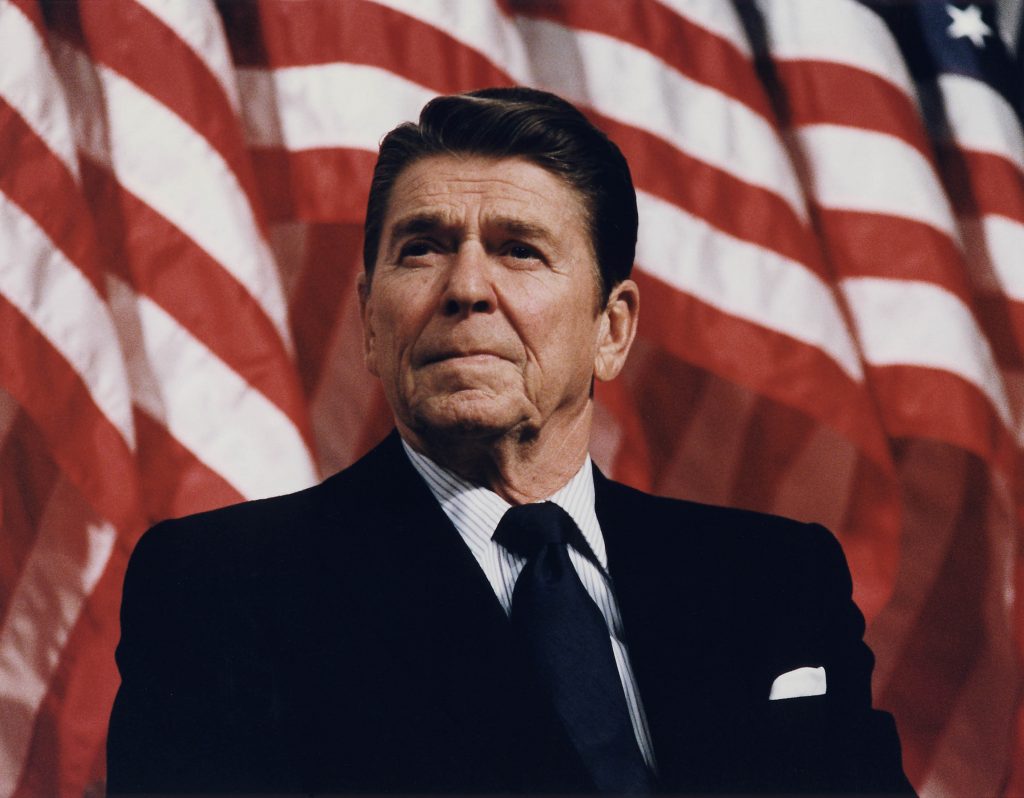
Life and Career
Ronald Wilson Reagan started his life inauspiciously, born on February 11, 1911 in Tampico, Illinois to a working class family. His early life was marked by a strong faith and an early belief in civil rights. Nicknamed “Dutch” by his father for a rotund appearance, the young Reagan slimmed down by his teen years and became a lifeguard. Moves around the Midwest in his youth eventually landed him in Des Moines, Iowa, where his life in the public eye began.
Starting out as a radio announcer, Reagan eventually landed a job announcing games for the Chicago Cubs; it was this job that took him on the road with the team and to California, where he landed a screen test. Radio and film collided in his first on-screen appearance in the film Love Is On The Air. Two years later, his film credit count was up to 19. His appearance in the film Knute Rockney, All American earned him a new nickname that would last a lifetime: “The Gipper”, but it was the 1942 film Kings Row that cemented him as a star. During his rise to fame, Reagan met and married actress Jane Wyman. The couple had two biological children although sadly the second child lived for only a day. They later adopted a third child.
WWII interrupted Reagan’s film career, as it did for so many, and although he returned to films in 1945, he never rose to the same heights. In 1948 political differences led to the end of Reagan’s marriage to Jane Wyman. He continued to appear in numerous films; a notable film near the end of his movie career was Hellcats of The Navy – memorable because it was the first and only time he made a movie with his then-wife Nancy. The pair had met in 1949 when she requested his assistance with the blacklisting of her name as a Communist, and married in 1952. Their marriage would be among the longest of Hollywood unions, lasting until Reagan’s death and producing two children.
After his final film appearance in 1964, Reagan moved into television work. In the meantime, his political aspirations were growing. Originally a staunch Democrat, Reagan’s leanings moved to the right over time, and by 1962 was a Republican. In 1966 Reagan ran for, and won, the job of Governor of California on a strong anti-Socialism platform. He made several major and controversial legislative moves, and spent two terms in the position before setting his sights higher.
In 1976, Reagan made his first bid for the Republican nomination for the Presidency, losing to Gerald Ford, who in turn lost the election to Jimmy Carter. 1980 was a different story. Reagan led the Republican party to a landslide victory over Carter, and became the 40th President of the United States. Reagan survived an assassination attempt shortly after taking office, in 1981. He won a second major victory in 1984, earning a second term in office. Reagan’s 8 years in office included major controversies and changes, including his financial policies which were dubbed “Reaganomics”, the “War on Drugs”, a highly criticized response to the AIDS crisis, and the “Iran-Contra Affair”. His Presidency also saw the escalation and eventual end of the Cold War and the fall of the Berlin Wall.
After leaving the White House, Ronald and Nancy Reagan returned to California. In 1994, the former President was diagnosed with Alzheimer’s disease. The progressive disease, along with pneumonia, led to his death in 2004. Nancy outlived him by more than a decade, dying in 2016.
Marilyn Connections
Although Marilyn and Reagan were in Hollywood during the same time period and eventually met, Reagan’s first connection to her occurred long before Marilyn Monroe was even an idea. It was Reagan, working for the Army’s First Motion Picture Unit, who assigned photographer David Conover to the task of photographing attractive young women in factories aiding the war effort. One of those young ladies was Mrs. Norma Jeane Dougherty, who was working at the Radioplane factory in Burbank. The 1945 photos were her first modeling shots and started her career.
Marilyn later met Reagan at a party for the birthday of Charles Coburn, Marilyn’s co-star in Gentlemen Prefer Blondes (and Reagan’s co-star in Louisa), in June of 1953. It is the only time they were photographed together.
In spite of claims to the contrary, Marilyn did not have an affair with Reagan – he is one of many alleged lovers for whom there is no evidence.
Marilyn and Reagan do have a connection through Jane Wyman – she later married Marilyn’s one-time vocal coach with whom she had a love affair, Fred Karger.
The two co-starred with some of the same people, although at different times. Marilyn had one of her first big breaks in All About Eve, starring Bette Davis. Reagan appeared with Davis in 1939’s Dark Victory. Reagan also appeared in That Hagen Girl with Rory Calhoun, who would appear in River of No Return with Marilyn, and in The Voice of the Turtle with Marilyn’s We’re Not Married co-star Eve Arden. He starred with Barbara Stanwyck in Cattle Queen of Montana, who appeared in another pivotal film for Marilyn, Clash By Night.
Reagan had an uncredited role in Jean Negulesco’s first solo directing credit, the short Alice in Movieland – he would go on to direct Marilyn in How To Marry a Millionaire.
A controversial political figure, Ronald Reagan started life with no sign of who he would become. He became one of the most influential people in U.S. history – and played a small role in launching the career of Marilyn Monroe, another person who started from humble beginnings to rise to great heights.
-Leslie Kasperowicz for Immortal Marilyn


